What’s the #1 thing you need to do if you’re applying to the most competitive university programs in Canada and internationally?
You need to organize your thoughts logically and solve problems in a structured way.
The issue is:
You were never taught how to do this in high school.
Over the last 10+ years, our coaches have helped over 1,000 students improve their communication skills, allowing them to get into top post-secondary programs, like Waterloo Engineering, McMaster Health Sciences, and U of T Computer Science.
How? We call it the Deductive Communication Approach™.
This approach is modelled after the same communication methods taught to the world’s top engineers at Google, scientists at Johns Hopkins, and consultants at McKinsey & Company.
The only difference: our approach is specifically tailored to YOUth.
Put simply, deductive reasoning starts with a general statement (Hypothesis) and then examines it using data and evidence (Main Arguments) to reach a conclusion.
The Deductive Communication Approach™ is designed for problem-based questions, like in Question 3 from McMaster Health Sciences’ 2020/2021 Supplementary Application, which presents a case study and asks you to find the value of ‘A’ and ‘B’. It is designed so that you can present a straightforward hypothesis, and then provide compelling arguments and data to support it. Learn more about problem-based questions and how to answer them in our Interview Prep Skills Guide.
Refer to our Narrative Communication Approach™ Guide if your application asks a personal question like this one from Queen’s Commerce: “Tell us something about you (background, an interest, a talent, etc.) that is an integral part of your identity, and why.” This approach will help you create a personal and emotional connection with your reader through storytelling, rather than a problem-based answer that presents an argument and evidence.
IMPORTANT: While most students use the Narrative Approach for Business/Arts app essays and personal interview questions, and the Deductive Approach for STEM app essays and problem-based interview questions, each of these approaches works for BOTH types of questions. If you are unsure which communication approach to use, connect with a coach for support.
If you’re not already working with a coach, find a match in just a few minutes here.
Table of Contents:
- The Basics: What is it?; Why is it effective?; and More.
- The Framework: Crafting a persuasive argument; Essential essay components; and More.
- The Process: How to brainstorm ideas; How to write your essay; and More.
The Basics: Deductive Communication Skills.
What is the Deductive Communication Approach™?
Good problem-based essays are analytical and research-focused, and the arguments are supported by evidence and data.
The Deductive Communication Approach™ uses an ‘top-down’ structure, where you answer the question first, then list your main reasons(s) and supporting arguments, and then summarize the broader usefulness of your point.
It has 4 main parts, which we’ll go through in detail:
- Hypothesis/Answer
- Main Reason(s)
- Supporting Arguments
- So What?
Think of the Deductive Communication Approach™ like a pyramid.
The most direct information/statement (Hypothesis/Answer) is at the top, and then as you move down the pyramid the information you provide gets more detailed and broad.
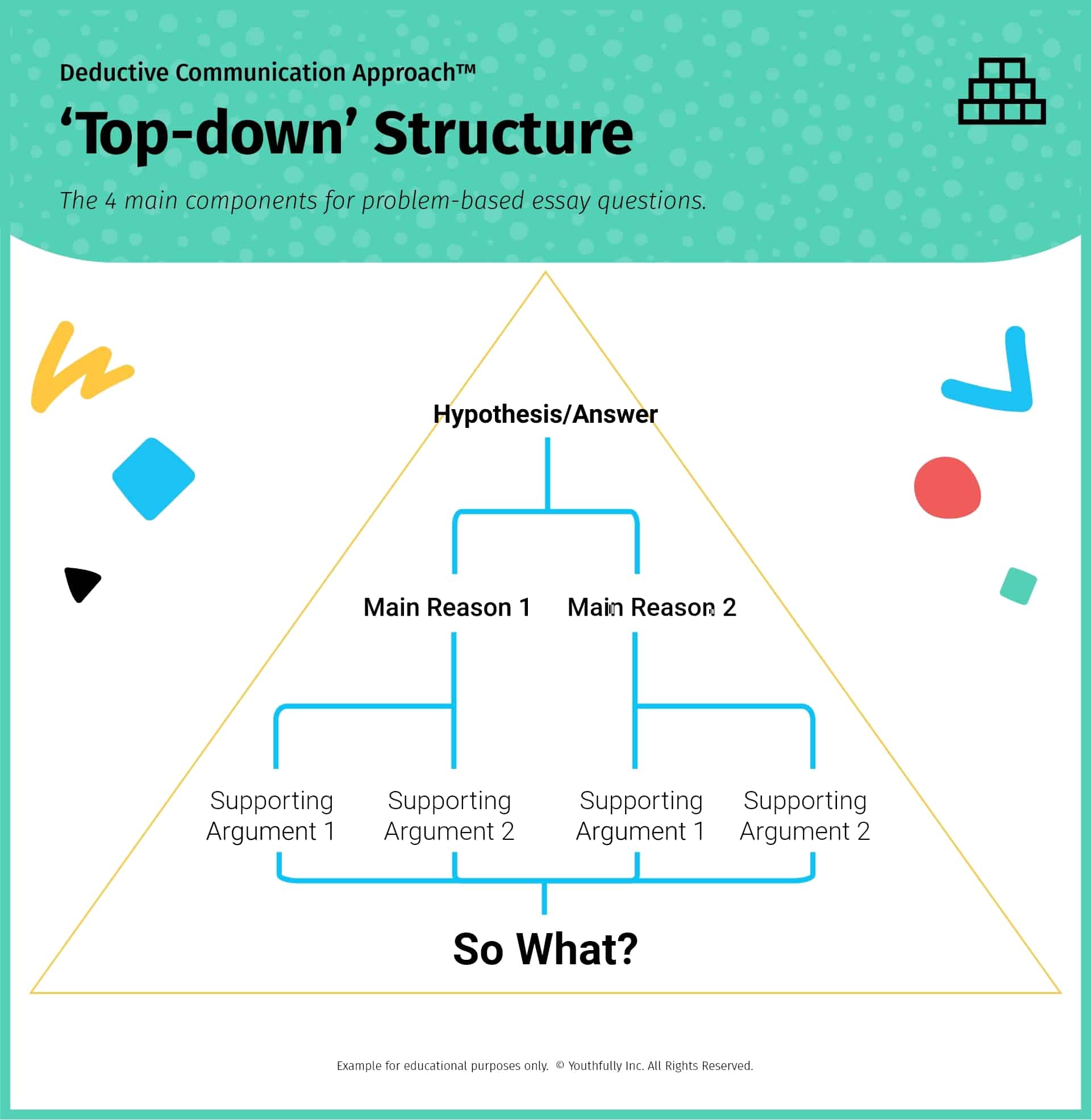
Understanding and using this approach will not only help increase your chances of admissions, but it will also make you a better communicator in other areas of your life, like:
- Short presentations and Dragons’ Den style pitches
- Science, tech, eng, math assignments at school
- Job interviews in STEM fields
- HOSA competitions
- MCAT and multiple mini interviews (MMI) for med school
Why does the Deductive Communication Approach™ Work?
The Deductive Communication Approach™ allows you to answer a question in a straightforward and efficient manner — and this is especially important for admissions committees who receive thousands of applications every year!
Your directness will be appreciated, trust us.
Essay evaluators are in logical fields (engineers, doctors, mathematicians, scientists, etc.) and they almost exclusively use data/proof to make decisions. They want to see that you can think in the same logical, structured way.
For example, McMaster Health Sciences has mostly professors and 4th year students reviewing their Supplementary Applications, and they have already been taught to communicate and think using this approach. This is an opportunity for you to show how you think about and analyze problems, as well as how well you can communicate.
So, this is exactly how you should approach your supplementary application questions.
Keep reading to learn how!
You Might Also Like
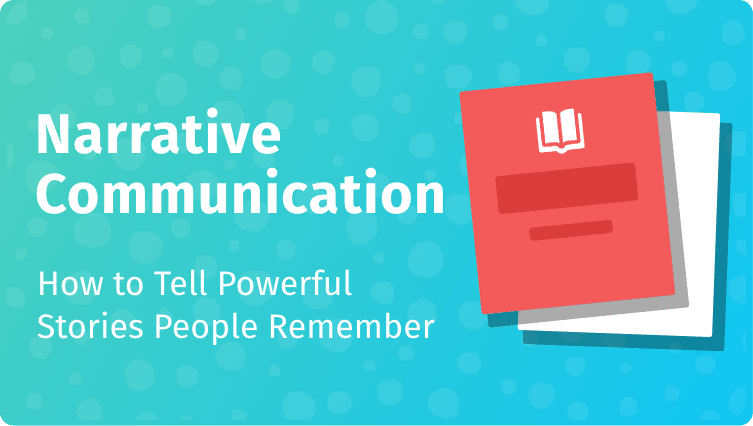
Skills Training
Narrative Communication: How to Improve Your Communication Skills Using Storytelling
At school, you’ve written extensive academic essays, evaluated classical literature, and enhanced your vocabulary. But you’ve never learned—and intentionally practiced—how… Read more
The Framework: How to Build Deductive Communication Skills.
Think of the Deductive Communication Approach™ like a research paper, where you start with a topic, then provide a specific argument with key evidence and data throughout.
For example, refer to this research paper published by McMaster professors that discusses the benefits of interval training.
This is how the approach lines up:
|
Deductive Communication Approach™ |
Research Paper Structure |
|
Hypothesis/Answer |
Abstract |
|
Introduction |
|
|
Methods |
|
|
Main Reason(s) |
Results |
|
Supporting Arguments |
Discussion |
|
So What? |
Conclusion |
Let’s take a closer look at each of these components.
Improve Your Communication Skills – Hypothesis/Answer
The Answer is where you state your main point concisely, right at the beginning of your essay.
Putting a compelling and unique answer up front lets you get to the point quickly and capture the attention of the reader.
How can you come up with something compelling and unique?
Try to understand the problem, figure out what it’s asking you to do, and break it down into smaller pieces.
Once you’ve done that, do some research about the issue. Search for studies, books, reports, or other sources that can help you learn more about the problem. Researching will help you make an informed opinion and decide what you want your answer to look like.
COACH’S TIP: Your answer will stand out even more if you find a new angle that hasn’t been talked about much yet in books, research papers, or studies. Researching can help you identify these gaps.
Communication Skills Examples – Hypothesis/Answer
Let’s look at Question 3 from McMaster Health Sciences’ 2020/2021 Supplementary Application, which presents a case study.
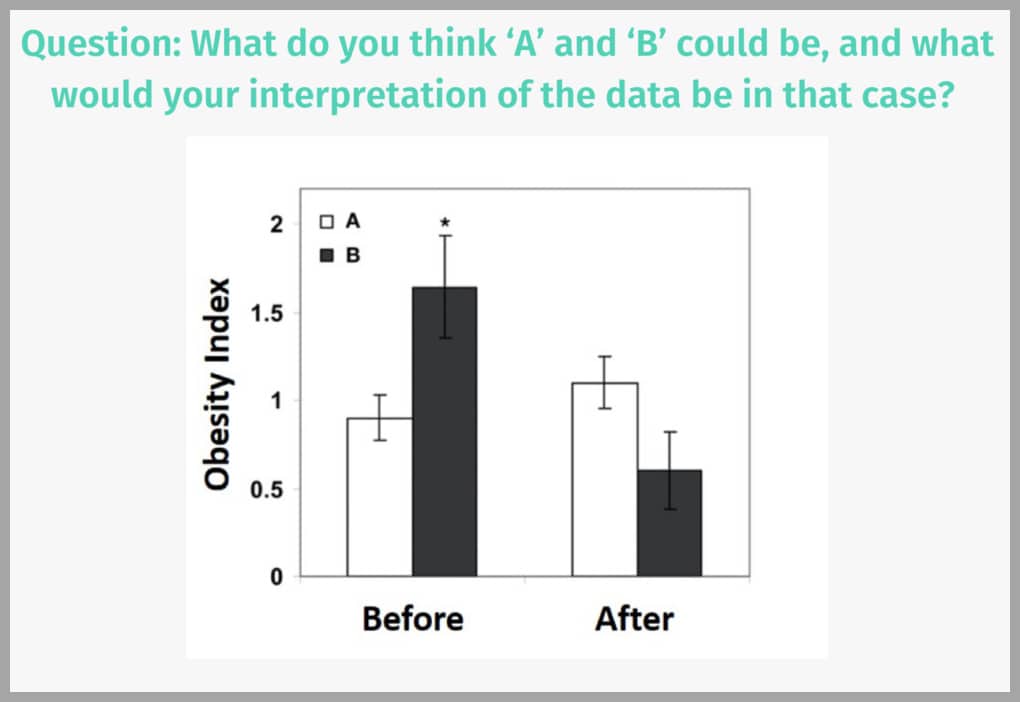
In this question, you’re presented with the following scenario:
- Gritsburg is a neighbourhood that has little public greenspace and healthy food
- Rising prices forced citizens to move to Hautainquartier, which was the opposite
You’re asked to compare the health-related measurements from children and determine what the data in columns A and B are.
Here’s a great example of the Hypothesis/Answer for this question.
REMEMBER: Please note that all of the examples below are EXAMPLES ONLY and are NOT meant for you to copy.
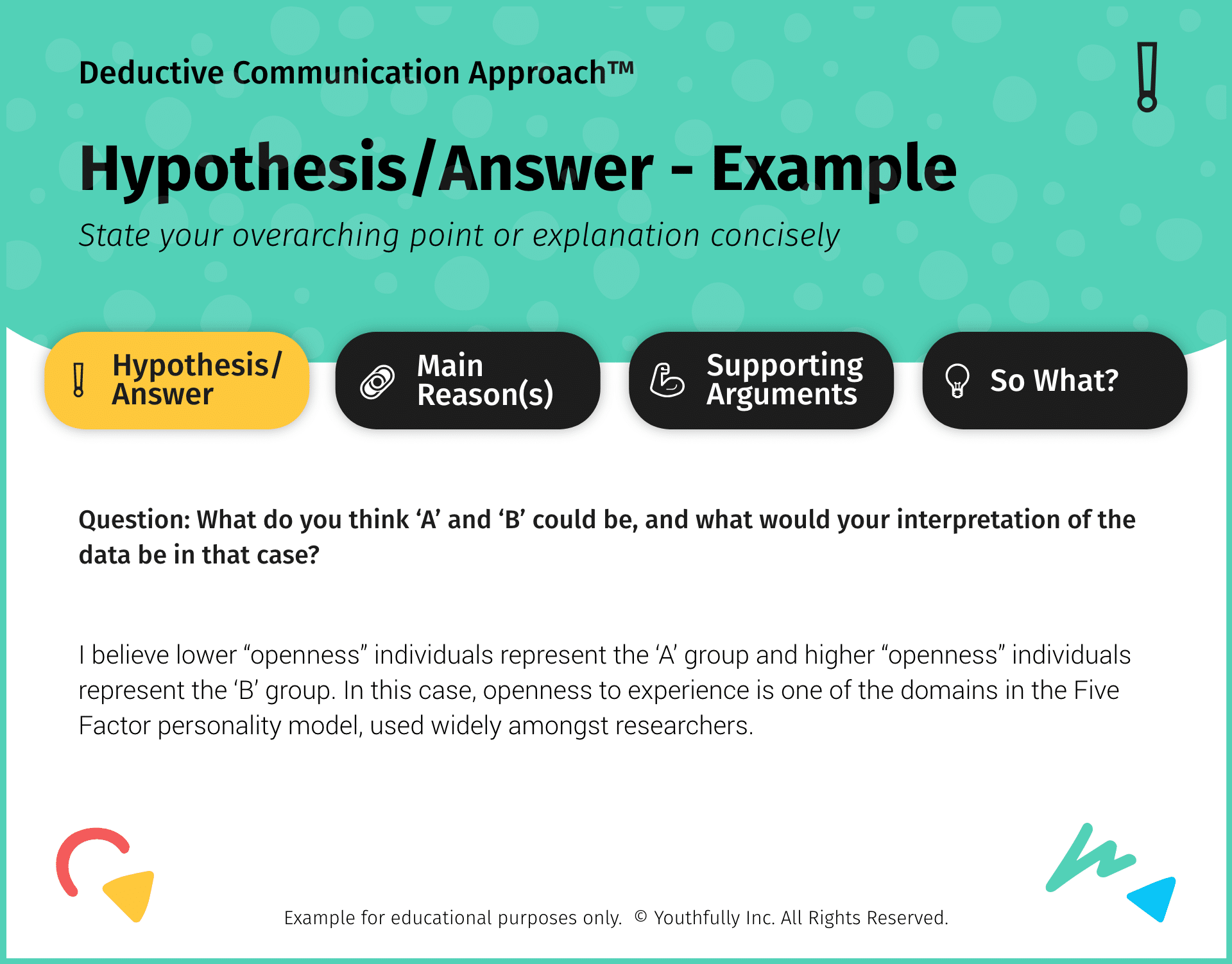
In this example, the student states her answer clearly and concisely. Her answer is also more unique because she approached it from a different angle, rather than the typical answer about income or education levels.
In this case, the student’s coach helped her conduct her research on issues like food security and children’s health and the relevant theories in those areas. Coming up with a new angle like this makes her answer stand out from the get go.
COACH’S TIP: There is no right answer. The important thing is that you can argue and prove your answer logically, using evidence and strong explanations.
For reference, in the McMaster research paper example, their Answer/Hypothesis is stated right in the first sentence:
“A training protocol that involved 3 min of intense intermittent exercise per week…could increase skeletal muscle oxidative capacity and markers of health status.”
Improve Your Communication Skills – Main Reason(s)
The Main Reason(s) explain why you believe your interpretation is true and valid.
It shows the evaluator that you can conduct rigorous analysis on a problem and argue a point clearly and logically.
Each paragraph should talk about one point that proves your answer using examples, studies, and data.
In your own essay, limit yourself to 1-2 Main Reason(s) (depending on the length of your essay). It’s better to have a few really insightful and interesting reasons than a bunch of unclear and unconvincing ones.
How can you find some really insightful reasons? Do some research about the issue, search for studies online, and think about a new angle that no one has thought of yet. You can also try to relate the reasons to other fields of study, like psychology or biology.
Communication Skills Examples – Main Reason(s)
In our McMaster Health Sciences example, the Main Reason(s) section also uses evidence to prove the answer:
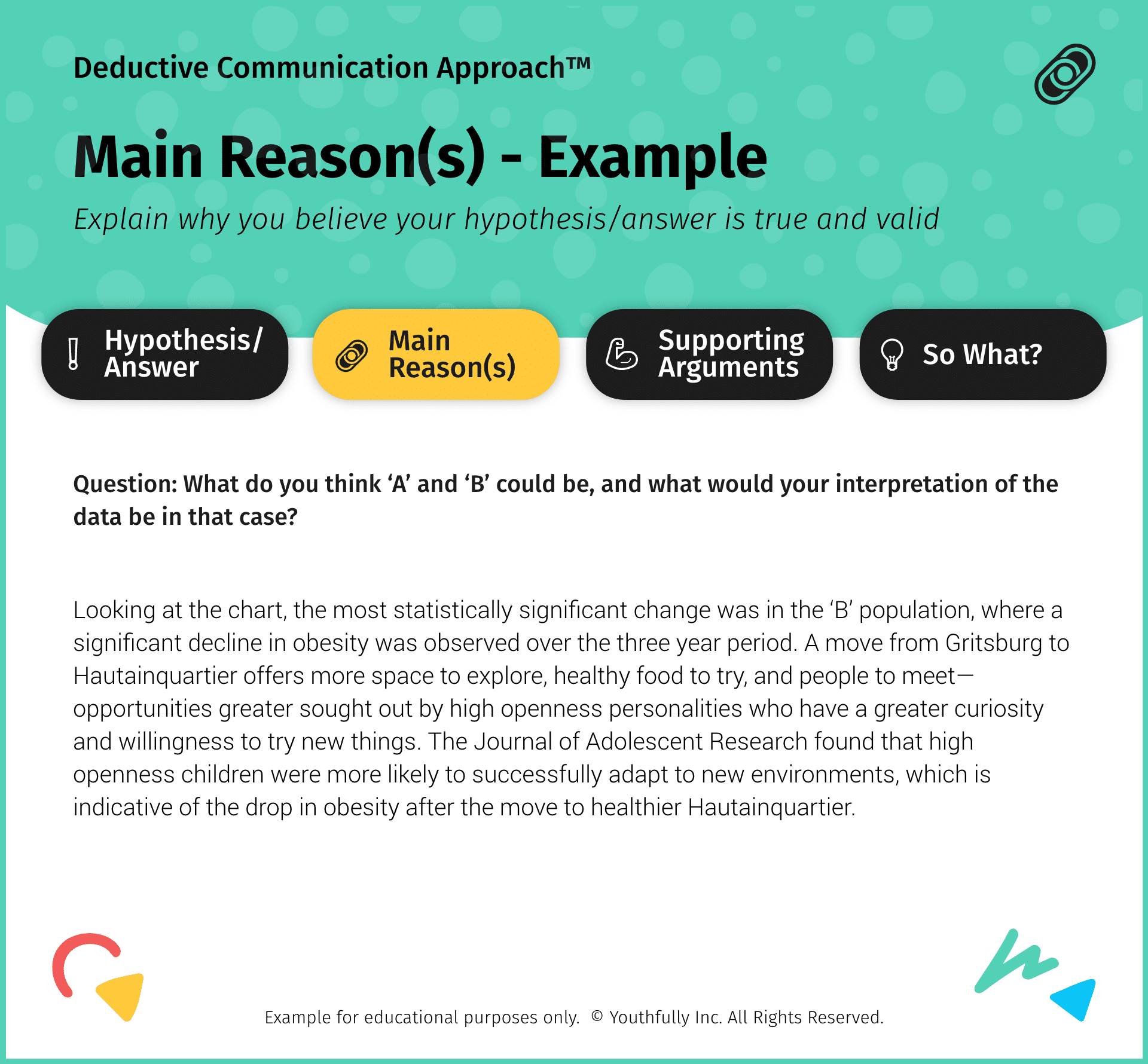
In this example, the student extracts the data from the graph’s B population over a certain period of time, while also using information from her research of the Five Factor Model and the details she was given in the question to expand upon and prove her answer.
COACH’S TIP: Organization is key. Admissions committees read hundreds of the same essay. You want to be crystal clear so that your reader can easily follow along with your line of thinking.
In the McMaster research paper, the researchers state their Main Reasons in the Methods & Results sections and relate it to their hypothesis:
A 3-min intense exercise protocol could increase skeletal muscle oxidative capacity and markers of health status (HYPOTHESIS)
Because…
Sprint interval training (SIT) improves VO2 peak, mean arterial pressure, systolic blood pressure, and diastolic blood pressure (MAIN REASONS).
Improve Your Communication Skills – Supporting Arguments
Your Supporting Arguments allow you to provide examples to support your Main Reason(s), and connect your reasoning with your Hypothesis/Answer.
Talk about your own experiences and why they lead you to interpret the data in a certain way.
Be more personal here, using facts, observations, and anecdotes from your life.
This is where the evaluator can get to know you. Otherwise, your essay will be disconnected and robotic.
Communication Skills Examples – Supporting Arguments
Here’s an example of a Supporting Argument for the McMaster Health Sciences essay question we mentioned above:
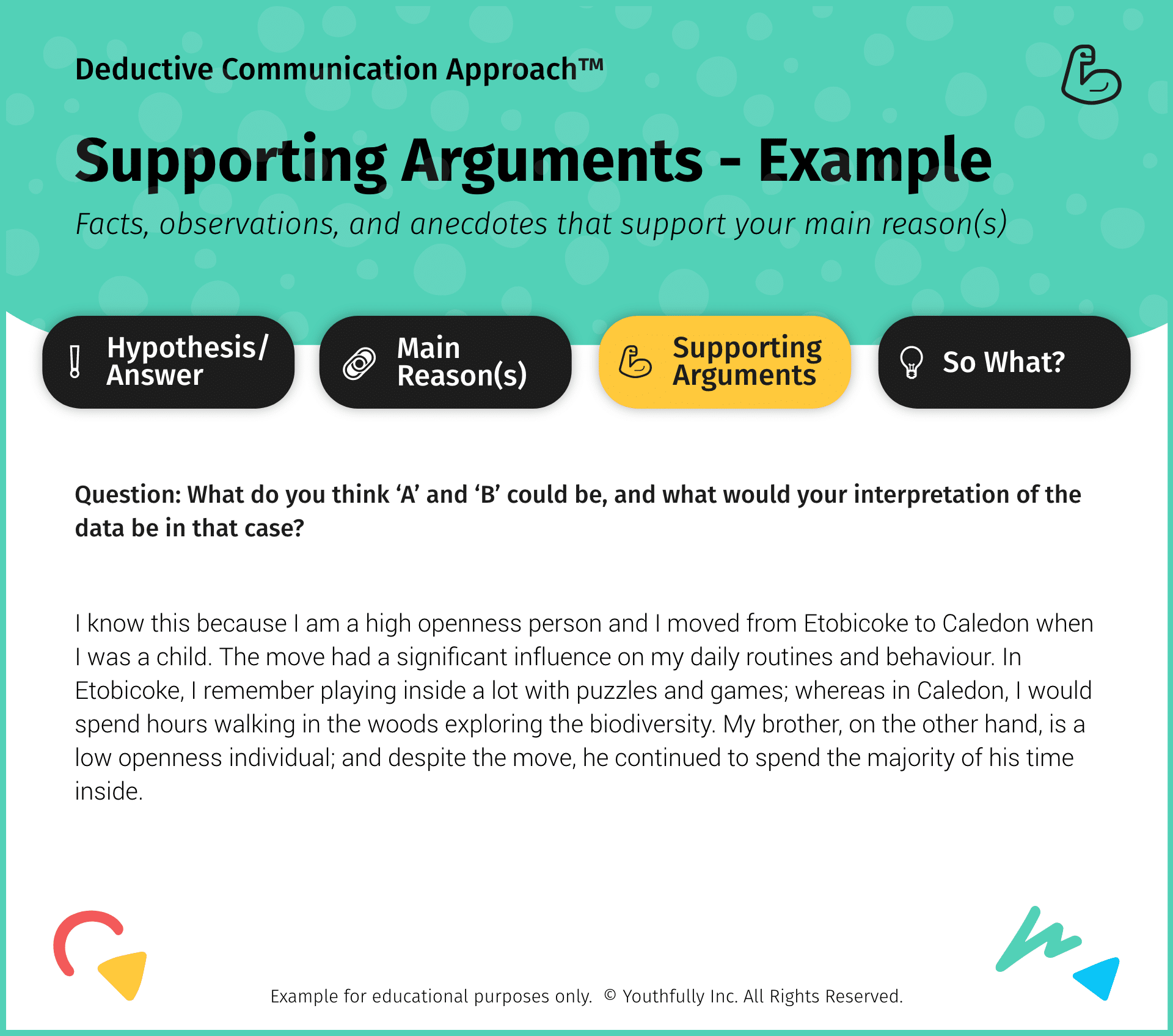
Here, the student further proves her Main Reason(s) by drawing on her own experiences of moving from one city to another, and then she relates it to the scenario in the question.
Your experiences make your argument stronger because it gives you the chance to provide first-hand observations and proof, while giving the reader the chance to get to know you.
For example, now the reader knows the student is open-minded, loves nature, and grew up in Caledon.
In the McMaster research paper example, their Discussion section incorporates supporting arguments from other sources as well.
You’ve probably heard of “Tabata” training. That’s a study they sourced to support their argument:
“Seminal work by Tabata and colleagues over two decades ago showed that 7–8 bouts of 20s all out sprints, with 10 s rest in between, improved VO2 peak in young men by 15%, when performed four times per week for 6 wk.”
We’re not saying reference other research papers in your essays, but add in any supporting arguments you feel are relevant and useful based on your own knowledge and experience.
Improve Your Communication Skills – So What?
You’ve given the arguments, so let’s take a step back and summarize the insight.
Tie it back to the question and relate it to the real-world in some way.
In other words, think of the reader saying:
“Okay, thanks for this, but why does it all matter?!”
This section is important because it challenges you to think more deeply, draw out bigger lessons from your experience, and think about how they directly relate to your Hypothesis/Answer.
Communication Skills Examples – So What?
Here’s an example of the So What? section from our McMaster Health Sciences essay example:
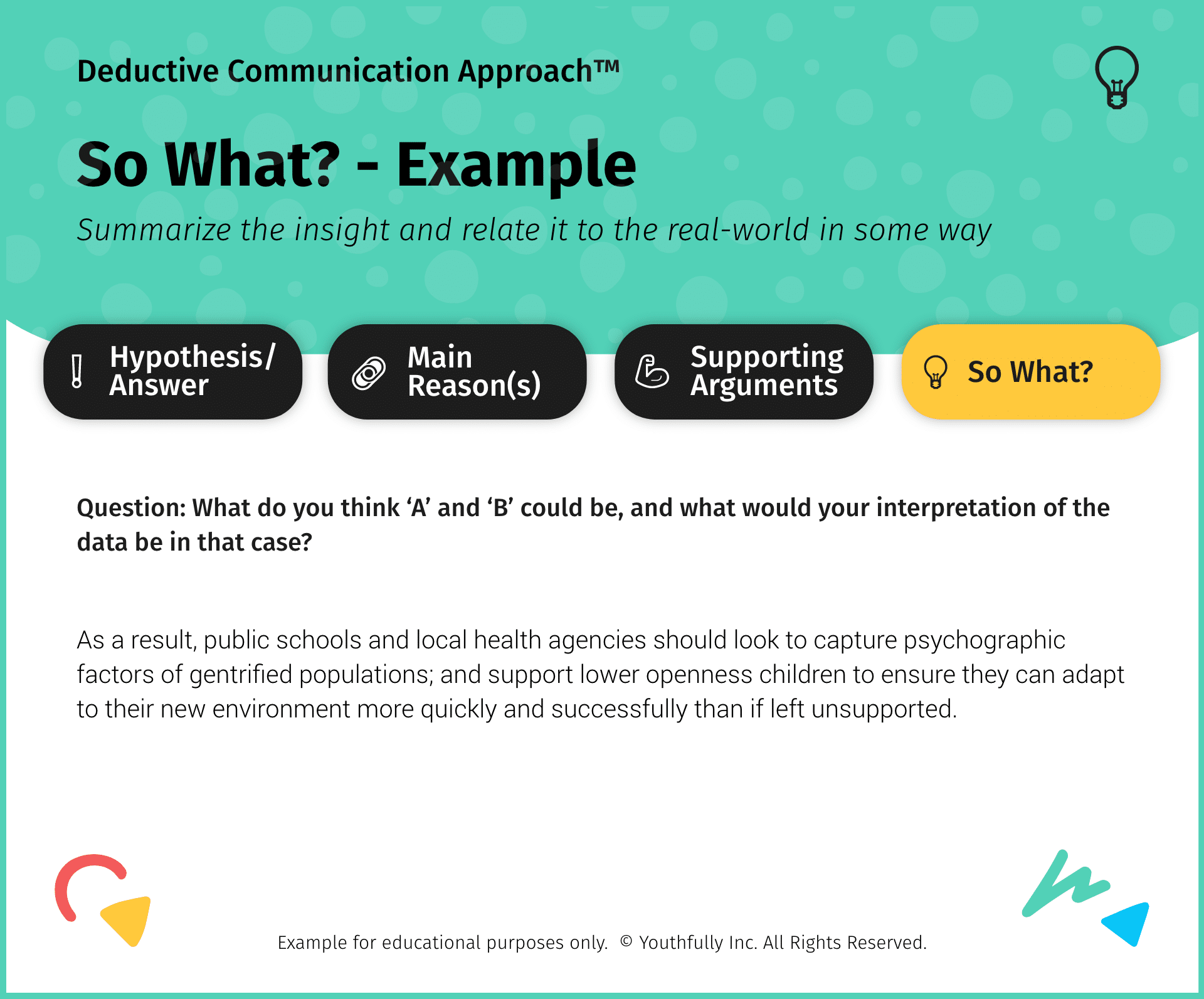
Here, the student expands her argument beyond the question to public schools and local health agencies more generally. She draws insight from what she’s learned through her research and her own experiences, and then applies it to the real-world.
Your coach will help you do the same thing through, what we call, inquiry-based coaching (aka asking you good questions to spark your thinking in a different way). Not currently working with a coach? Get started here.
In the McMaster research paper example, the So What? section is in their Conclusion.
“[Our research] provides further evidence of the potential for very brief, intense bursts of exercise to elicit physiological adaptations that are associated with improved health status in a time-efficient manner.”
A journalist took the So What? a step further when they wrote an article on the study: No time to exercise? Researchers say it only takes minutes.
Putting It All Together
Now that we’ve gone through the four components of creating a persuasive and concise argument, let’s see what the finished product looks.
Here’s the McMaster Health Sciences example, with all the elements of the Deductive Communication Approach™ we discussed above included.
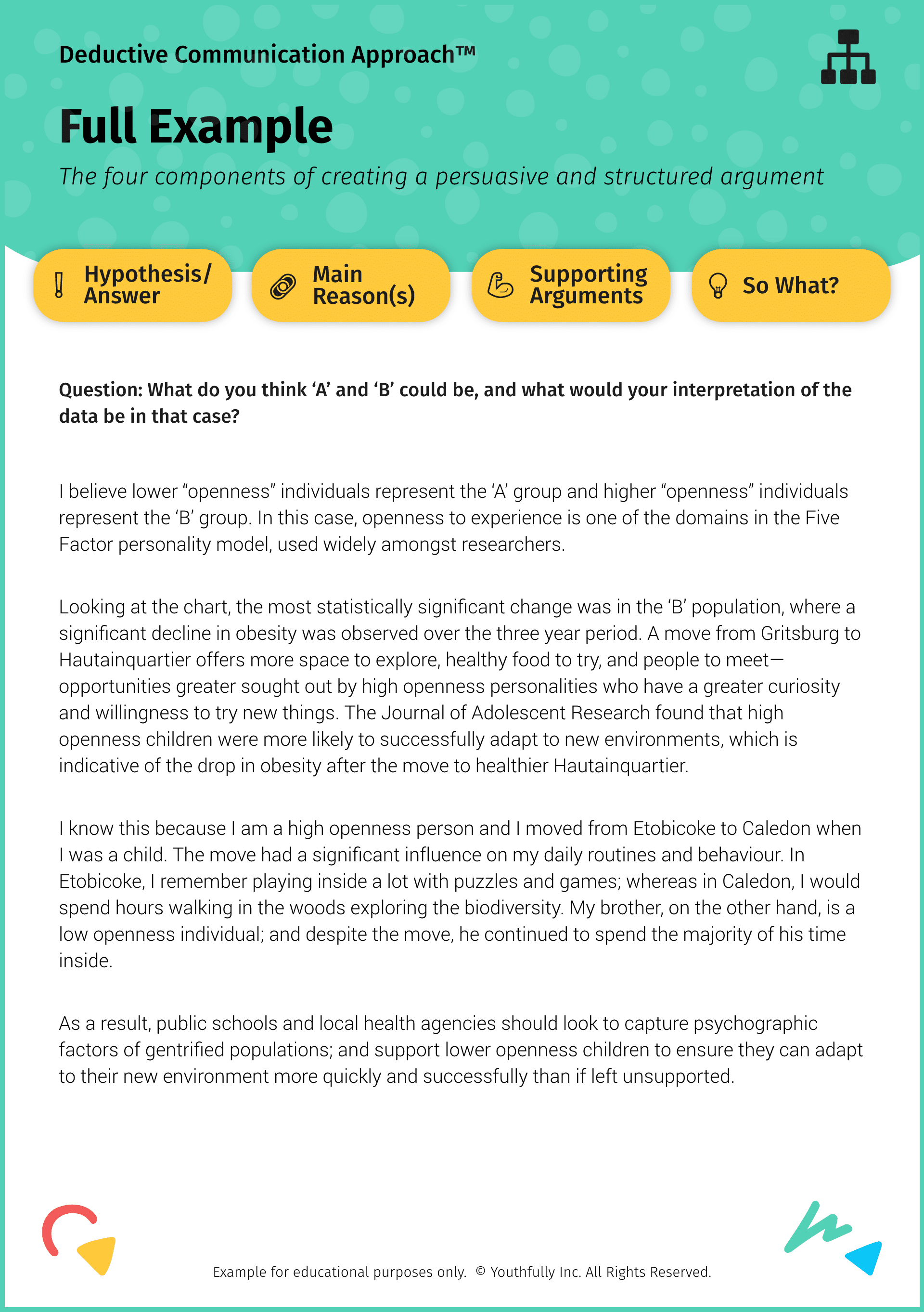
It’s amazing, right?!
Keep reading below to learn tips and tricks for editing and perfecting your essay once you’ve figured out your Hypothesis/Answer and have written it.
If you want to discover how you can come up with a persuasive and memorable essay using these 4 components, connect with a coach today!
School doesn’t teach real world skills. We do.
get a youth coach™
The Process: How to Showcase Your Communication Skills Using the Deductive Approach.
Sitting down to write an essay can be difficult and overwhelming if you don’t know where to start.
But don’t worry, we got you!
In this section, we will show you the steps to writing a flawless problem-based essay.
Step 1: Understand the Question and Find a Hypothesis/Answer
Before you decide what your Hypothesis/Answer will be, you need to understand the question completely.
Students often jump straight into writing, and that’s a mistake.
Read the question over a few times and look up any words you don’t know. Jot down some bullet points about what the question is asking you specifically.
Once you’ve done that, come up with a few possible answers. These questions are designed so that many different answers can be given, and looking at it from every angle will help you decide which answer you think is best.
COACH’S TIP: Don’t make it too complicated. Think about how the reader would explain your essay in one sentence. If it would take a lot of explaining, then your idea is too elaborate.
When coming up with a Hypothesis/Answer, you also want to first decide what the takeaway message is (i.e. how would you sum up the argument in one sentence). This will help make your essay unique and memorable so that you can stand out among other applicants.
Tie Your Answer to an Experience
Many students believe that they cannot incorporate themselves into problem-based essays, which tend to be very analytical.
We’re here to tell you: you can (and should).
…Especially in your Supporting Arguments section.
With limited space most of these essays require, we highly recommend focusing on one thing about you. Here are some examples:
|
One Thing About You |
Examples |
|
Extracurricular Achievements |
A club you joined, a sports team you played on, a certification or award you earned, etc. |
|
Experiences |
Moving to Canada and learning to adapt to a new country or work you’ve done in your community. |
|
Skills |
Maybe you’re uniquely good at getting people to open up to you and share things they wouldn’t with other people. |
|
Values |
Perhaps you’re passionate about expediting the mRNA vaccine research process to battle against future pandemics. |
COACH’S TIP: When choosing an experience for your Hypothesis/Answer, focus on something that is relevant to the school. For example, if you’re applying to McMaster Health Sciences, use an example that showcases your critical thinking, problem-solving skills, and interest in science/medicine. The student in our McMaster Health Sciences example strategically uses a well-known theory in psychology (the Five Factor Model) to show her knowledge and interest in this field, as well as her ability to use science-related arguments to create a compelling answer.
If you and your coach have completed your Student Identity Blueprint™, it will be easy for you to find relevant and unique things that you can showcase in your essay. If you haven’t completed your Blueprint, connect with a coach to get started.
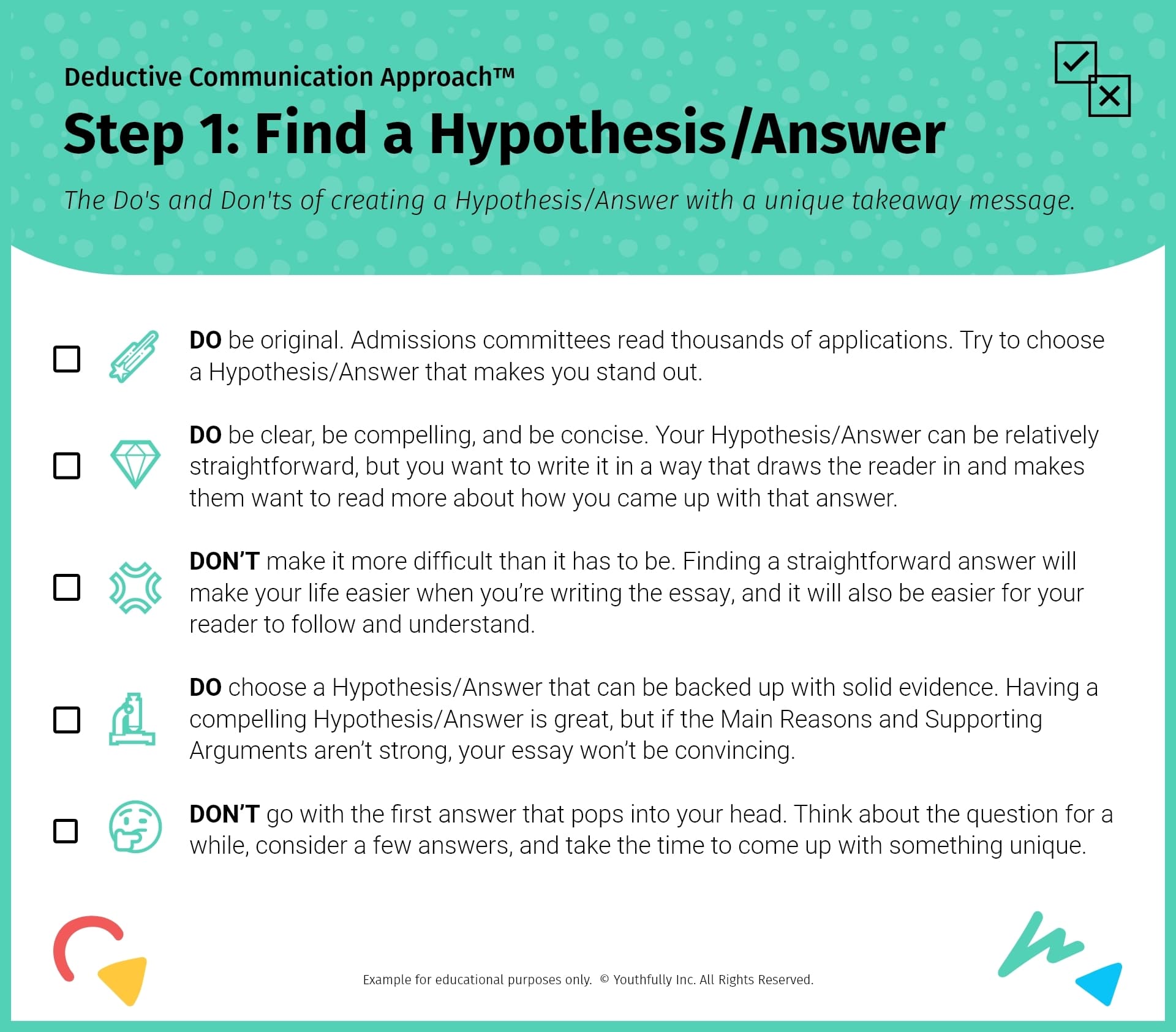
Step 2: Set Up The Structure
Now that you’ve established your Answer and evidence to support it, it’s time to come up with a plan to communicate it.
Structure is key because it shows that you have really thought about your topic and that you know how to communicate effectively.
When organizing the structure of your essay, your coach will work with you to co-create a suggested template that breaks down each section and tells you what to focus on.
Many of these suggested templates are already built and available for free on our Student Resources page.
Make sure your structure follows the process discussed above. In the template, you will see these sections: Hypothesis/Answer, Main Reason(s), Supporting Arguments, and So What?.
The template for our McMaster Health Sciences example above looks like this:
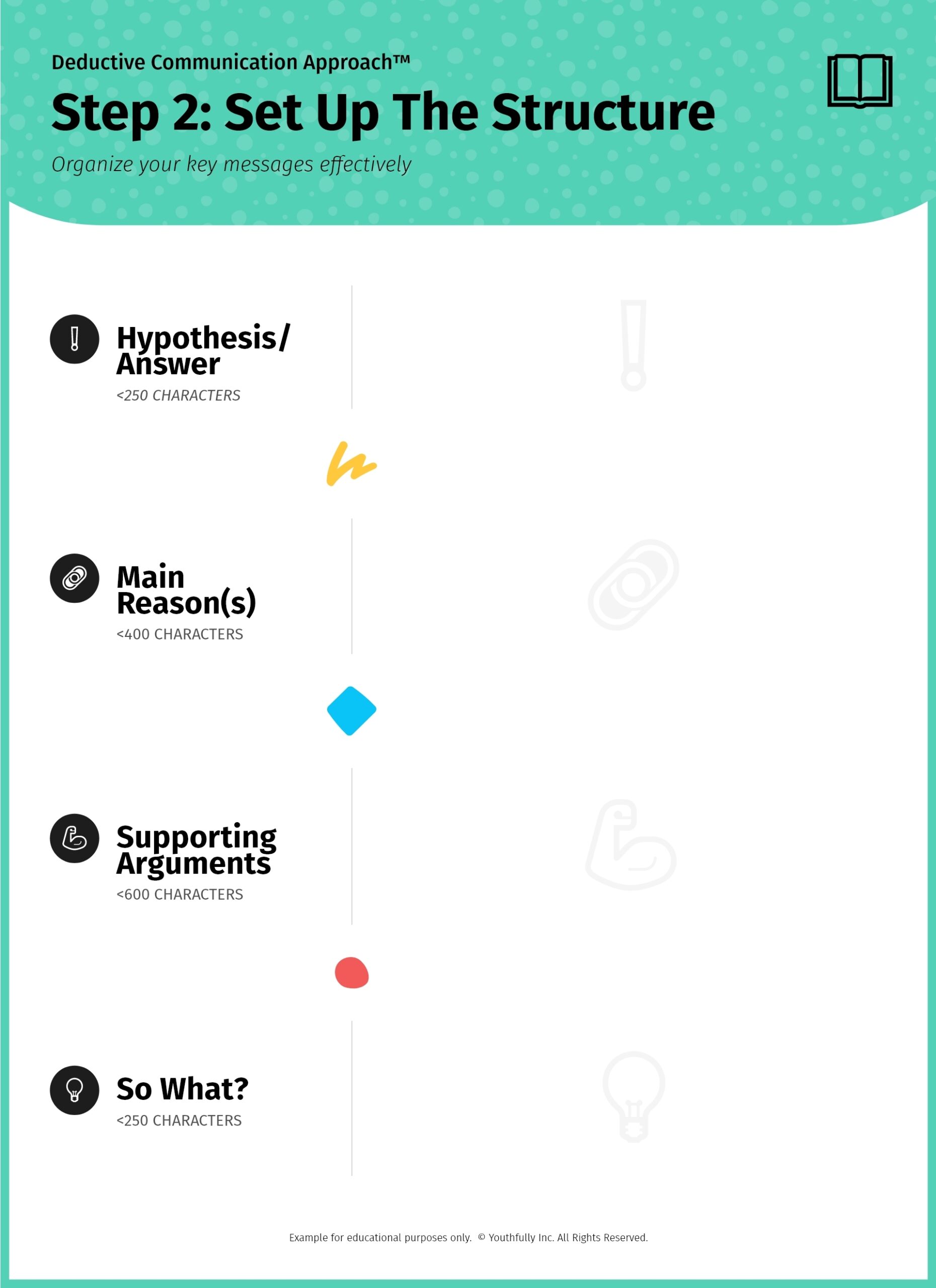
REMEMBER: Don’t worry about word count, word choice, or writing style at the beginning. Just write some general ideas, reasons, and evidence. You can perfect it later.
Step 3: Get The Flow
Under each section in the template, create rough bullet points that discuss the points you want to include in each section.
Don’t worry about character count or polished writing at this point, just get something down.
For each bullet point, try to have one key point/argument per sentence to keep your theme clear and focused.
This is what NOT to do:
|
Paragraph 1: Hypothesis/Answer (~250 characters) State what your interpretation of ‘A’ and ‘B’ to be referencing the time elapsed and change in variables from the before and after state. |
|
These four bullets, for example, should be more like one or two key points and should be a bit more descriptive.
In our McMaster example above, the rough bullet points in the template looks like this:
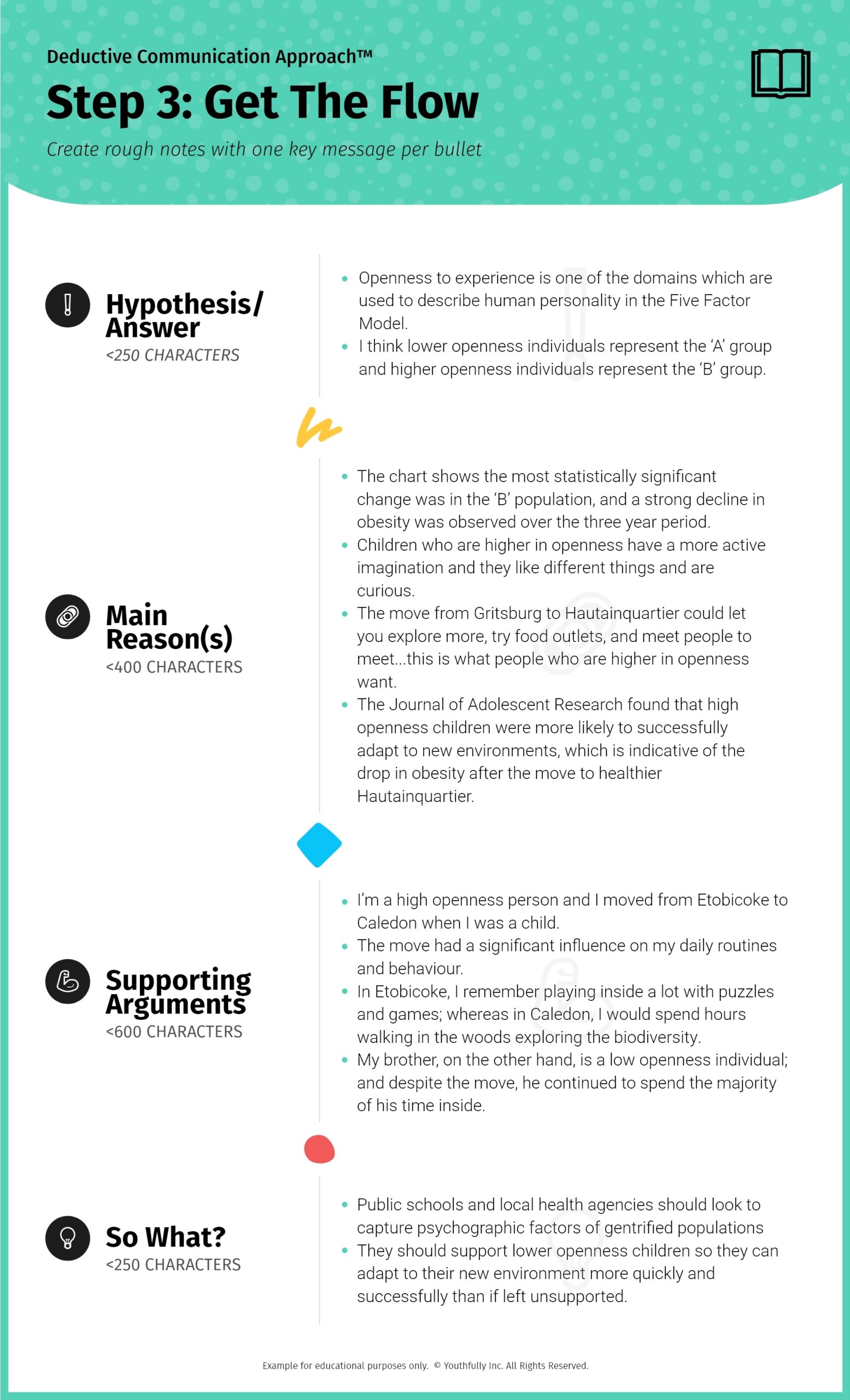
Your coach can help you create these bullet points and come up with a summary of the points you want to include. In our coaching calls, your coach will ask you to tell them what you want to say in each section, and by simply discussing it together you will have created the first draft of your essay.
If you haven’t already, connect with a coach to get started!
Step 4: Create a Finished Version and Revise
Fine-tune your points to create complete sentences.
Make sure that each point is clear and compelling, and take out some of the sections that don’t add value to your Hypothesis/Answer or are repetitive.
In this step, you’ll probably need to move some sentences around. That’s okay! Do this to make sure each point is connected and that each section flows into the next one.
Remove the bullet points, and voilà — your essay is done!
In our McMaster Health Sciences example, the finished template looks like this:
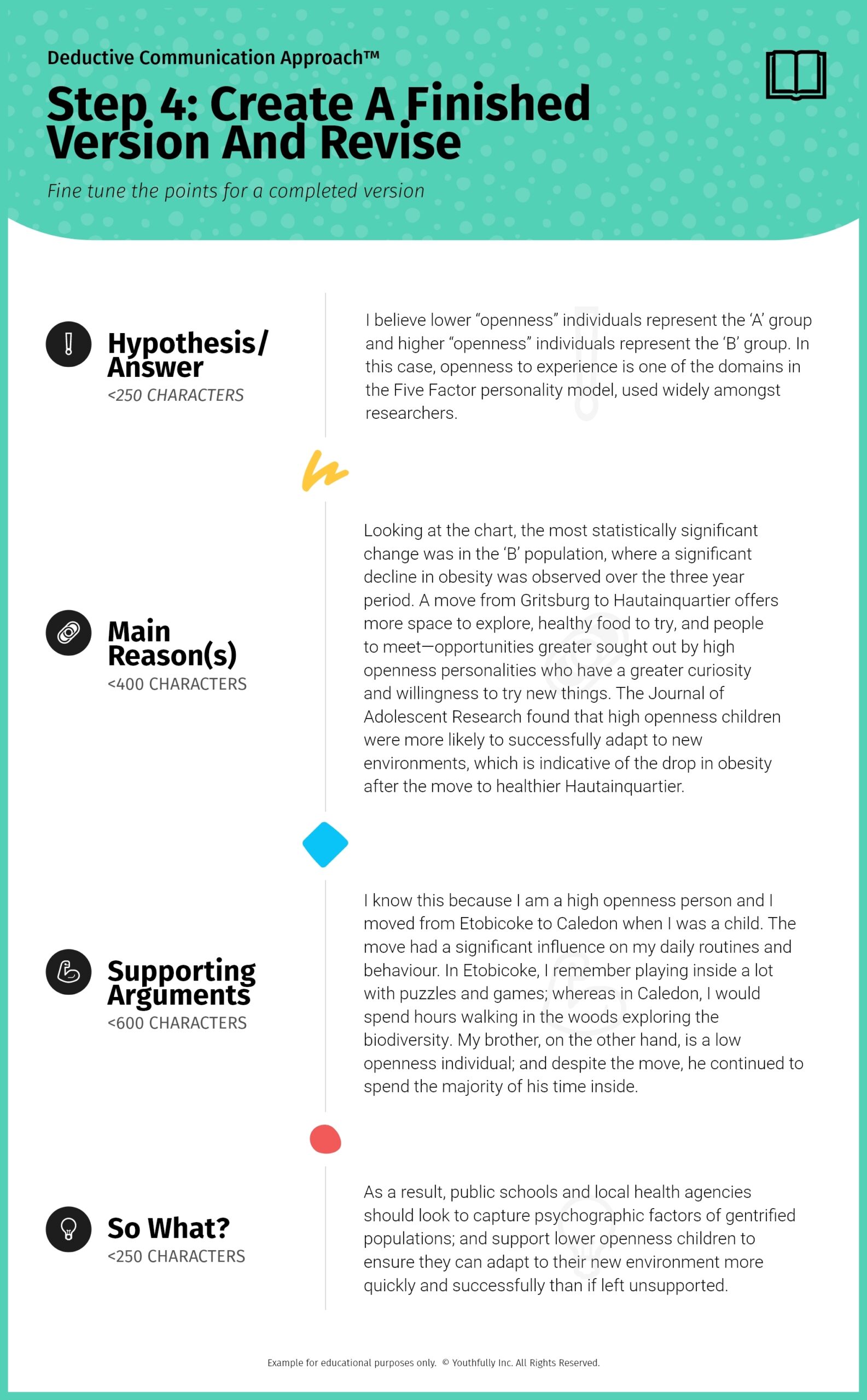
Step 5: Final Proofing and Polishing
Making sure that your essay is completely error-free is really important.
Perfect the grammar and make sure that all your arguments, points, and data are clear and concise. Then, check the character count and cut some things if you need to.
Next, give your essay to one or two people who you trust to read it and provide feedback. It will also help to ask someone who is already in the field you’re applying to to read it to make sure that it makes sense to them.
COACH’S TIP: Don’t ask too many people to read your essay. This leaves you open to conflicting views or suggestions that can stress you out or confuse you. Everyone is going to provide different feedback, so be selective with who you ask.
Once you have finished proofing your essay, walk away from it for a day or two. Stepping away can help you see things that you might have missed.
REMEMBER: Once your essay is done, be confident in the work you’ve written! We see so many students get really stressed out about what they should have changed. If you follow these steps, be happy with your work and confident that you did the best you could. Stressing and being anxious won’t get you anywhere!
You Might Also Like
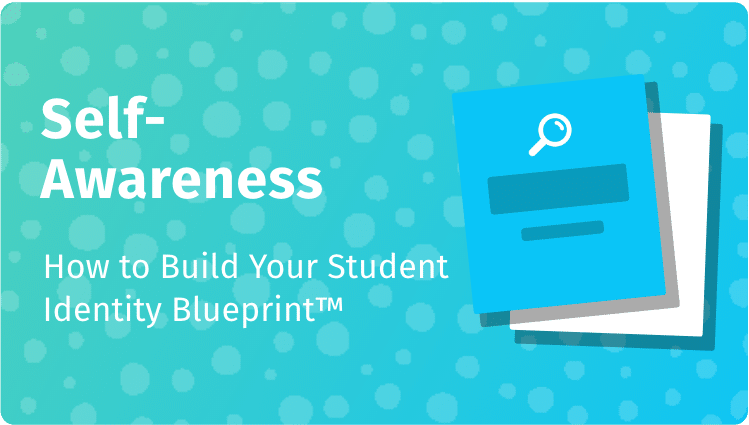
Skills Training
Self Awareness: How to Build Self Awareness Skills & Discover Who You Are
We get it — planning for the future is stressful. With changes in technology, expanded career options, and more competitive… Read more
You’ve Got a Dedicated Coach in Your Corner
For over a decade, we have successfully helped thousands of students achieve more than they ever thought possible.
Our 1-on-1 Youth Coaching fills that gap that most high schools miss. We can help you build self-awareness through probing questions and assessments, set bigger goals to elevate your extracurriculars and future career plans, and improve skills that matter on supplementary applications, such as interviewing, communication, critical thinking, and creativity.
We use a coaching methodology, called ‘full student’ development, that’s been proven to increase your chances of admission to top-tier universities and obtaining competitive jobs/internships.
So, what are you waiting for? Fulfill your post-secondary potential with the mentorship and coaching you’ve always wanted! 🙂
IMPORTANT: Want to share information and/or images from this resource on your own website, blog, article, etc.? Please ensure you reference content of any kind published by Youthfully Inc., in whole or in part, using the following statement: (1) Our Organization (Youthfully Inc.); (2) The title of our content/resource; and (3) the URL to our webpage where the content was originally posted. For example: “Sourced from: Youthfully Inc., ‘Deductive Communication: How To Improve Your Communication Skills With Structured Problem Solving,’ https://youthfully.com/deductive-communication-skills/.”
Not doing so is an infringement of copyright and is illegal. We spend significant time developing resources for students, so please take a few seconds to ensure they are referenced properly.


